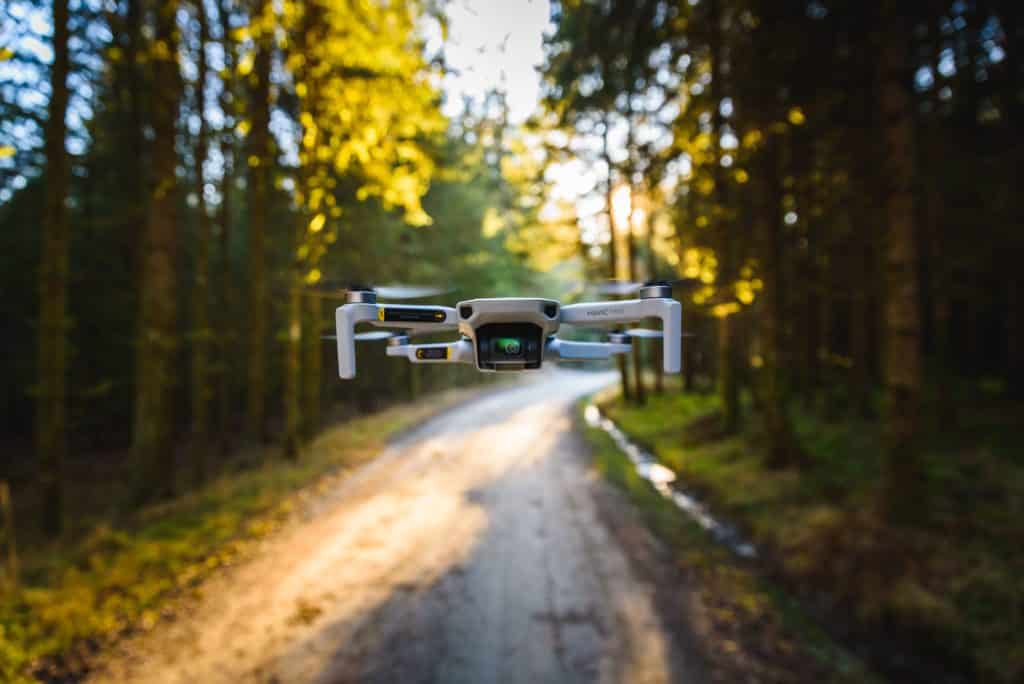
The DJI Mavic Mini has quickly become a popular model of choice for both commercial and recreational drone pilots. Due to its popularity, both new and experienced pilots are getting caught out by flyaways with this particular model, with the mini being blown away and the pilot being unable to safely return the drone.
Why Is This Happening?
Drones fly by two sets of propellers rotating in opposite directions, pulling and pushing the drone in different angles (pitch), enabling it to fly in different directions and at different speeds. Bigger drones such as the Mavic 2 Pro can pitch themselves very steeply into the wind and can continue to fly even when being pushed around by a strong wind.
However, a Mini is different. Due to its incredibly light weight, the amount of pitch it can produce is limited to only around 30 degrees, which reduces its overall maximum speed and therefore reduces the maximum wind speed that it can handle.
The Mini’s top speed is roughly 29mph and its reduced pitch means that once it encounters winds of around 25-30 mph it will start to drift. Please see below a few tips on how to prevent a flyaway happening in the first place:
How To Prevent Flyaways
1. Start With a Full Battery
As battery levels reduce, the Mini may struggle to produce the same level of thrust. Flyaways with the Mini are far more likely to happen when the battery goes down to between 20 – 40%. You may therefore wish to consider landing before your battery gets this low.
2. Check The Weather In Advance & Your Surroundings
It is useful to utilise apps such as UAV Forecast which will provide you information such as wind speed prior to your flight. However, forecasting apps are not always accurate in regards to your precise location and the exact date and time of your flight. It is therefore wise to look at your surrounding areas. Ask yourself a few questions. Which way is the wind blowing? If the Mini blows away is it going to be carried out over water or over a town?
3. Fly Out Into The Wind & Fly Home With The Wind
This is a really simple and easy tip to follow and is pretty much self-explanatory!
4. Stay Low At First – Don’t Go Too High
When you are first taking off, don’t fly at a high altitude immediately. Test the wind speed at a lower altitude so that you can land quicker if necessary.
5. Don’t Rely On The Return To Home Function
Return to Home can make the situation worse if you are in sports mode. This is because it will flip the drone back down into positioning mode, which has got a lower maximum speed.
These tips are useful to know before you take off, however how do you stop a flyaway during a flight?
How To Stop A Flyaway In Progress
1. Use Sports Mode
Tap the top left corner in order to utilise sports mode. Sports mode has a higher maximum speed which may be the only thing you require to get you back.
2. Reduce Altitude Whilst Flying Forward
Slowly descending whilst flying back will help the Mini overcome strong winds.
3. Perform A Controlled Landing
Attempt to perform a controlled landing prior to the drone losing battery or signal. Very low battery initiates a forced auto landing that you can’t cancel and could end up with the drone landing in a stream for example. If the Mini is blowing away with a small amount of battery, this will eventually cause a loss of signal, and you are then unable to track the drone down.
If you know that the flight is going wrong, land the drone as quickly as possible. Push the camera straight down and use the screen to look for an appropriate place to land, away from people and animals. If you land in a controlled manner the drone is unlikely to encounter any damage and you can then use the find my drone function to take you to the point it landed. The find my drone function is in the DJI app and shows the latest known location of the drone. The function can only work if you haven’t lost signal that’s why its so important to do a controlled landing rather than forcing it to fly until you eventually loose signal.
If you follow these simple steps, this should help you if a flyaway were to occur. We hope that this article helps overcome this problem and you can enjoy your flight safely with piece of mind!
Information Source: Ian In London
